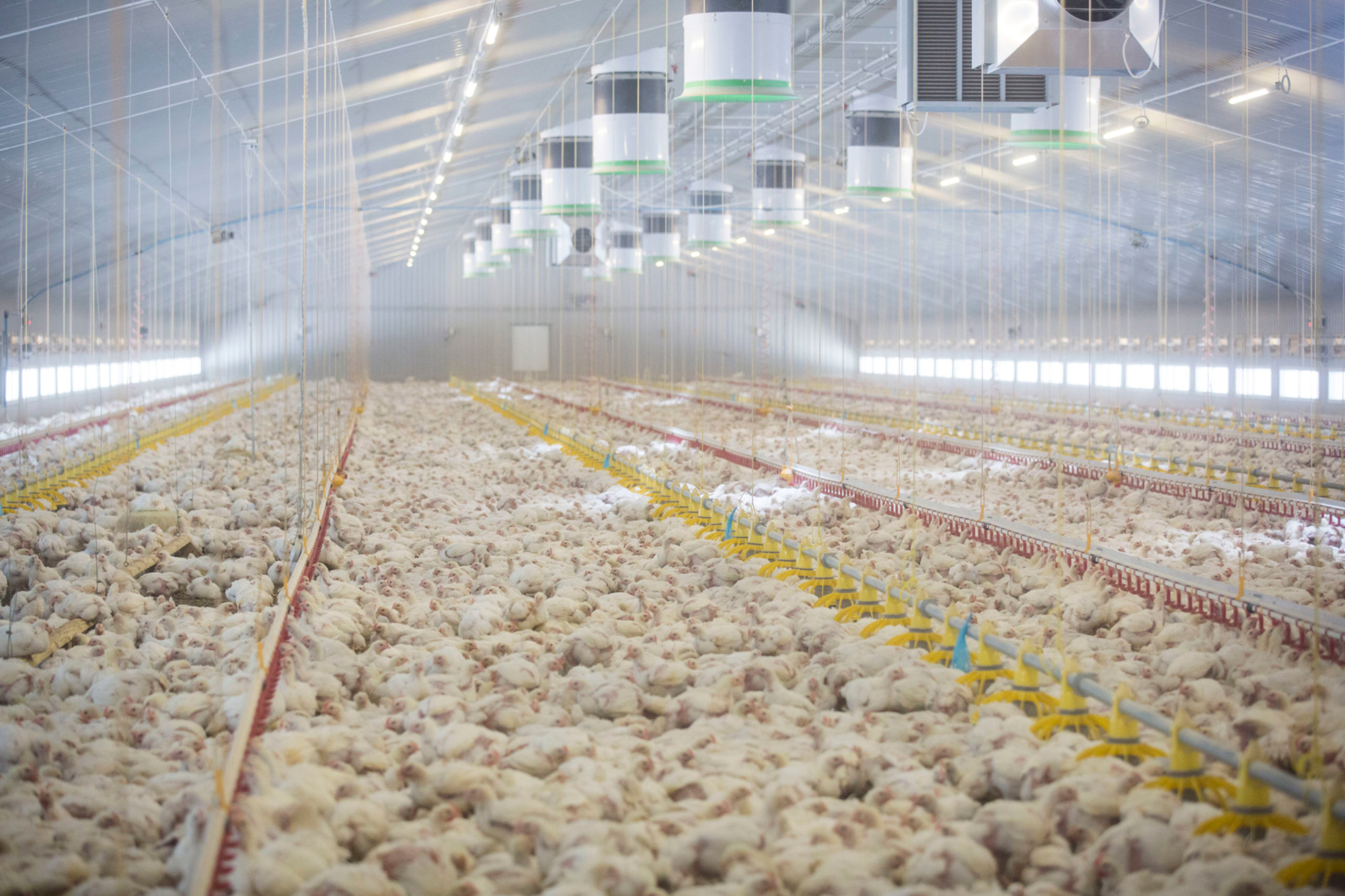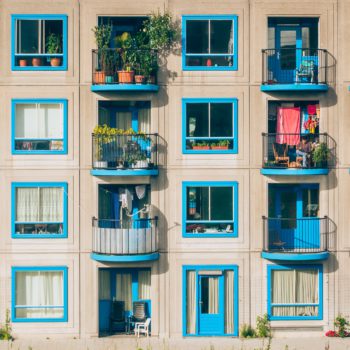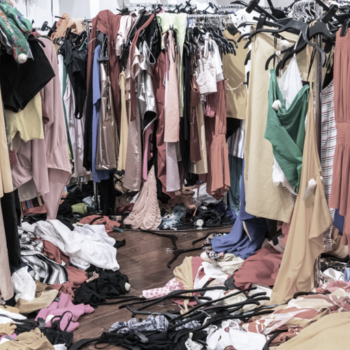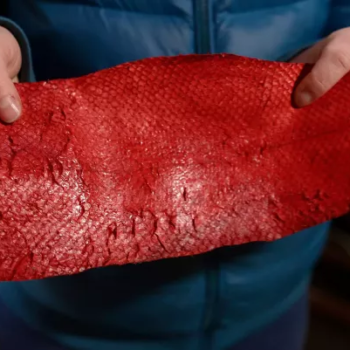With the recent pattern of outbreaks like Ebola, SARS, and now COVID-19, many people are concerned that another virus will arise in the near future. In the world of factory farming, public health risks are completely ignored. Could applying “social distancing” rules to animals really help us all live healthier and safer lives?
Public health risks in animals
Most animals (both wild or domestic) carry some type of virus. But due to the symbiotic nature of the virus-host relationship, animals rarely show symptoms. In the wild, animals roam with plenty of open space, preventing the virus from spreading (since finding a new host would be difficult). However, when animals are packed tightly in confined spaces (like wet markets and industrial farms), viruses can spread quickly and in some cases mutate to thrive in human hosts.
As the human population expands, we increasingly encroach on wild areas whose inhabitants are unaccustomed to the presence of humans. These previously secluded animals now interact with crops, farm animals, infrastructure, and people. In the case of COVID-19, wild animals carrying the virus came into contact with humans due to habitat encroachment. Thus, the virus jumped from host to host. Due to a lack of ‘social distancing’ from wild animals, COVID-19 rapidly spread across the globe.
It’s easy enough to learn from the recent outbreak and stay away from wildlife. But what about domesticated animals in factory farms? Farm animals carry many diseases but because we use them for food and other resources, we have no choice but to be close to them. Or do we?
More meat, more crowding
As the world population increases, so does the demand for meat products. Between 2000 and 2018, global annual meat consumption increased from 232.5 million tons of meat to 341.16 million tons of meat. Increased meat consumption incentivizes production, putting pressure on the farming industry. In the interests of profit, animals are given little space and shoved in crowded and dirty facilities. These warm, cramped, unsanitary places provide perfect breeding grounds for bacteria and viruses. With hundreds of potential hosts all crammed in one location, a virus can easily travel and multiply.
So far in 2020, 15 billion farm animals have been killed for food. In comparison, 7.8 billion humans live on Earth. For every living human, we kill about eight farm animals a year. Imagine the human population expanding eightfold. We would likely have to live in cramped communities with overextended sanitary systems and insufficient resources. This is what it’s like for a farm animal. They literally live in their waste with hardly any room to turn around. Workers poorly maintain water and food supplies, and distribute them incorrectly.
These sub-optimal conditions make animals weak and susceptible to disease, inducing rapid virus spread in factory farms and posing serious dangers to overworked workers who get little to no protective equipment. Overtime, the virus can mutate and jump to a human host. Once the virus moves to humans, it’s too late; workers can infect hundreds before they even show symptoms.
Regardless of the human threat, the overwhelming amount of manure will attract other animals like rats, birds, and insects. These animals can leave the farm and bring the virus with them.
So why do we allow farm animals to live like this? Is factory farming not a public health risk?
The Animal Welfare Act of 1966
The Animal Welfare Act of 1966 “regulates the treatment of animals in research, exhibition, transport, and by dealers” in the United States. The law pertains to animals in zoos, aquariums, research facilities, and puppy mills. Such animals must have proper care and nourishment, with violators liable for serious punishment.
Who is left out? As it turns out, animals.
For example, the legislation does not protect pet stores, hobby breeders, and farm animals like pigs, cows, and chickens. Cow and pig farmers do have certain transportation and slaughter guidelines they must follow separate from the Animal Welfare Act, but no guidelines regulate the living conditions of these animals. Unfortunately, chickens don’t even have transportation and slaughter guidelines. Farm animals are consistently mistreated. Not just for the inhumane ways they are killed, but also for their living conditions — from cradle to grave.
Scientists predict this won’t be the last time a global pandemic arises from animals, but we can take preventative actions to contain downstream risk and ensure public health and safety of our global community.
Factory farming is a public health risk
First, the Animal Welfare Act should expand to all farm animals. This requires farmers to provide more space per animal. Many areas of the world lack robust animal rights laws. This disparity persists as the developed world grows. Preventing the close confinement and unsanitary living conditions of farm animals will reduce transmission risk for a given virus.
In addition, factory farm workers deserve better working conditions. Many workers lack proper training or protective equipment to work in these hostile environments. They work with unhealthy air, unclean water, and abundant waste that animals produce in confined spaces. We must protect these frontline workers to prevent further virus spread. Companies are ultimately responsible for employee safety, and play a substantial role in the safety of the global community too.
Consumer impact
Consumers can make an impact as well. Buying from local and/or responsible producers that raise animals in open pastures is one great way consumers can influence the market to push for better conditions for animals. Consumers can also choose to eat less meat by eating one to two meatless meals a week. This may not seem like a lot but it can reduce the demand for meat and thus reduce crowding in farms.
Being a knowledgeable consumer helps too. Beware of misleading labels that say ‘cage-free’.
Cage-free implies that animals live outside wired cages. However, this label does not prevent animals from living in crowded barns, unable to go outside. Likewise, labels that read ‘free-range” or ‘pasture- raised’ tend to use animals with more space and access to the outdoors.
Making real change
Change can be difficult, but I think we can all agree that COVID-19 has changed how we live our everyday lives in a significant way.
Once the quarantine ends, we cannot go back to ‘business as usual’. We need to globally come together to figure out how we can do a better job of ‘social distancing’ ourselves from animals and improve their living conditions for a healthier and safer world.
Removing factory farming, or significantly improving its operations, is a contributing factor in preventing another public health disaster.













No Comments